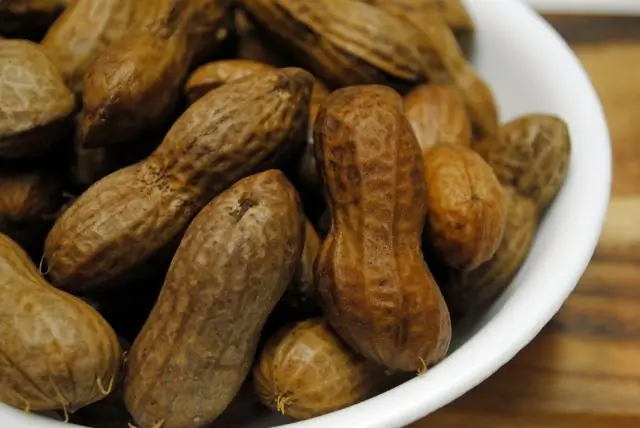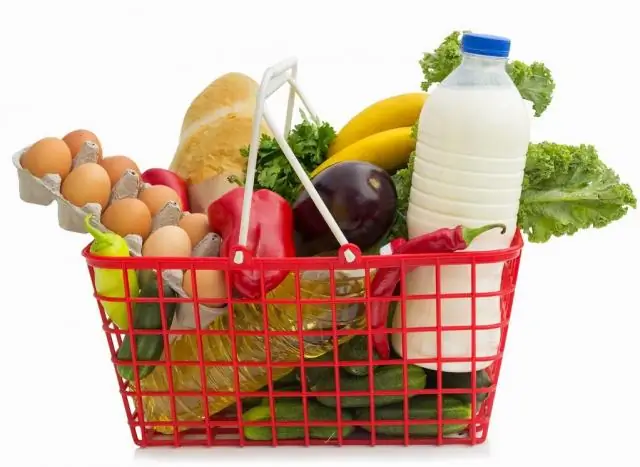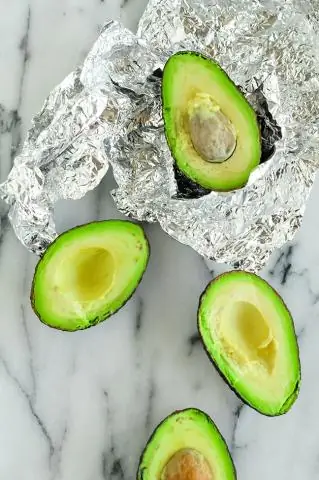
Table of contents:
- Author Bailey Albertson [email protected].
- Public 2023-12-17 12:53.
- Last modified 2025-06-01 07:32.
Time Proven Effective Ways to Store Garlic

Garlic is a must-have in any home. It is used not only as a seasoning for various dishes, but also as a preventive and therapeutic agent for many diseases. If you have a vegetable garden or a summer cottage, you probably grow garlic "in reserve". However, over time, it begins to turn yellow, dry out, moldy or germinate, not even living up to mid-winter. Why does garlic spoil, how to avoid it and save the product?
Content
- 1 The need to create certain conditions for storage
-
2 Recommendations for harvesting
2.1 How to properly remove garlic
- 3 Storage conditions
-
4 Effective ways
-
4.1 Interesting unconventional ways
- 4.1.1 With vegetable oil
- 4.1.2 How to store garlic in vegetable oil - video
- 4.1.3 Garlic powder at home
-
- 5 What to do if garlic starts to spoil
- 6 Storing garlic in the refrigerator in winter - video
- 7 Some more tips and feedback from hostesses
The need to create certain conditions for storage
Like any plant whose fruits are subject to long-term storage, garlic requires certain conditions. Failure to comply will significantly reduce the shelf life of the product. You risk losing your entire crop if you don't provide the right temperature, humidity and light. You even need to pick garlic according to certain rules so that it does not spoil too quickly.

Compliance with storage rules will help you preserve the harvest of garlic as long as possible.
If you do not follow the storage conditions, you run the risk of encountering the following problems:
- High humidity will lead to the defeat of fungal diseases - green mold, black rot.
- Heads dry quickly at high temperatures and low humidity. Such a product falls into disrepair: it does not have a specific taste and aroma, only an unpleasant smell.
- Exposure to direct sunlight activates the photosynthetic process, causing the garlic cloves to sprout, preparing to give life to a new crop. Not the most suitable option if you planned to keep the product at least until spring.
Harvesting advice
The storage duration of garlic directly depends on the correct and timely harvest. When determining the timing, it is necessary to take into account the peculiarities of the growing season of this culture, its growth and development.
- In spring, or summer, garlic, yellowing and lodging of the tops are signs of the onset of the harvesting period. Most often, the cleaning period is from mid to late August. Varieties belonging to this species do not produce an arrow.
-
Winter garlic is considered ripe after the lower leaves turn yellow and the wrapper at the inflorescences cracks. The scales that cover the bulb become thin and dry. This type of plant is usually harvested in late July - early August. Winter varieties can be arrowed and non-arrowed.

spring and winter garlic Winter garlic has large cloves and a powerful central core, which is absent in spring
Choose a dry and warm day for cleaning. But do not delay, you need to do everything promptly and on time. Any delay can lead to a deterioration in the quality of the product.
How to remove garlic correctly
-
You need to get the garlic out of the garden carefully so as not to damage the heads. To do this, take a shovel or pitchfork, carefully stick it into the ground and lift. Now collect the garlic, remove the soil from the roots and bulbs with your hands and lay out to dry. Do not cut off the tops: the garlic should dry with the leaves.

drying garlic It is necessary to dry the whole garlic, do not remove the leaves
- If it is dry, warm and sunny outside, spread the garlic right on the site for 3-5 days. In rainy or damp weather, place the bulbs in a well-ventilated area, such as an attic or veranda.
- After drying, proceed to pruning. Remove the roots so that no more than 3 mm remains, and the stems up to 10 cm.
- Now sort the heads and put them in storage, providing suitable conditions.
Storage conditions
There are 2 ways to store garlic:
-
Cold: humidity 70-80%, temperature +2 to + 4 ° C. It is recommended to store winter garlic under these conditions. These include the following varieties:
- Hermann;
- Alcor;
- Dubkovsky;
- Lyubasha;
- Healer;
- Zubrenok;
- Ext.
-
Warm: humidity 50-70%, temperature from +16 to + 20 ° C. Used for spring varieties.
- Abrek;
- Aleisky;
- Gulliver;
- Yelenovsky;
- Sochi-56.
Do not forget that winter garlic is not very suitable for long-term storage. Due to the smaller amount of covering scales, its heads begin to dry faster.

Air - ripe garlic seeds
The air is the garlic seed that forms at the top of the arrow after flowering. They are also called bulbs. Storage conditions depend on what type of garlic you are growing.
Effective ways
The most common way to store garlic at home, known to our ancestors, is by braiding. You have probably seen such bundles not only in historical films and in paintings, but also in your grandmother's house.

Timely harvested, well-dried garlic is braided according to the principle of a braid or wreath, and then hung in a cool room
If you decide to store garlic in this way, you need to master the weaving technique. It is simple, but the first time you have to try. Remove all leaves, leaving a false stem and head. Start weaving from the bottom, adding new bulbs one by one, up to 15 pieces. Make a loop at the end of the braid to hang the bundle.
This method is good if you live in a private house. For an apartment, other methods are more suitable.
-
Pick up shallow baskets, cardboard boxes, or crates. Place well-dried garlic heads in them. Place the filled container in a cool, dry place, away from heating appliances. Sort through the garlic from time to time and remove the spoiled heads. This method is simple, but not effective enough: you will hardly be able to control the level of humidity and temperature in such conditions. Garlic may dry out or mold.

garlic in a basket Shallow baskets and drawers are very convenient, but do not provide long shelf life for garlic.
- Linen bags and nylon stockings are great for storing garlic. Fold the prepared heads in them and put them in a dry, dark place. If the air humidity in the room is low, you can sprinkle the garlic with onion peel, if it is high, the bag or stocking must be treated with a saturated saline solution (dipped in salt water and dried). This method is the most common, many housewives confirm its effectiveness.
-
Storing garlic in nets where vegetables and fruits are sold. This is a fairly convenient option, properly dried bulbs, folded in such nets and suspended in a dark place with a suitable level of temperature and humidity, do not deteriorate for about 3 months.

garlic in nets In a city apartment, a small amount of garlic can be stored in vegetable or fruit nets.
-
Place well-dried, unpeeled heads of garlic in sterilized dry jars or other deep dishes. Arrange them in rows, sprinkling each with flour. Close tightly with lids and place in a dark place. However, not all housewives like this method; many say that flour does not protect garlic well enough from drying out and mold.

garlic in a bowl of flour You can store garlic in a deep bowl, sprinkle each row with flour
-
An effective, albeit not very common, way of storing garlic is dry pickling. Fold whole uncleaned heads into any suitable container (jars, boxes), pouring a large amount of coarse salt, the lower and upper layers of which should be at least 2-3 centimeters. Close the container with a tight lid and place in a cool, dark place. Salt will keep the garlic from moisture, limit oxygen access and serve as an excellent antiseptic.

garlic in a jar with salt Garlic keeps well in jars filled with table salt
-
You probably know that the garlic sold in stores is covered with a layer of paraffin. This provides the product with long-term storage. You can use this method at home if your crop is not very large. Melt the paraffin in a water bath and immerse the heads in it one by one. Wait 2-3 hours, then place the garlic in the cartons. This method is quite effective, but time consuming.

coating the garlic with paraffin If each head of garlic is covered with a thin layer of melted paraffin, the bulbs will not dry out, and the shelf life will significantly increase.
- Many people prefer to store garlic in the refrigerator by folding it in pre-drilled plastic bags. This is a good way, but only if you have few heads and plan to use them in the next 3 months.
- Garlic can also be stored in the freezer as whole heads or cloves that have not been peeled. A prerequisite is the temperature not lower than -2 degrees. Otherwise, the product will freeze and lose its taste.
- When preparing the garlic for storage, trim the roots, leaving about 10 mm. Burn the bottom of the head over an open fire (for example, on a gas stove), then put the crop in boxes and hide in a dark, cool place. This method has been known for a long time, it provides long-term preservation.
-
You can wrap each head of garlic in cling film (in 2 layers) and put it in cardboard boxes or glass jars, sprinkling with small sawdust.

garlic in cling film Wrap the garlic tightly in plastic wrap and store in the refrigerator
-
If you have special lids for vacuum canning, put the clean, dried heads in sterilized jars, cover with these lids and evacuate the air. Garlic preserved in this way can be stored in the refrigerator: it will not lose its taste and healing properties for a long time.

vacuum containers Vacuum canning devices help you preserve garlic for as long as possible
Interesting unconventional ways
The above methods are effective enough, but you may not want drawers and jars to take up a lot of kitchen space. There are also non-traditional methods that will not only ensure long-term preservation, but also make the product a full-fledged original seasoning, always ready to use.
With vegetable oil
You will need:
- pre-sterilized and dried glass jars;
- capron covers;
- peeled garlic cloves;
- vegetable oil (sunflower, corn or olive).
- Make sure the garlic cloves are clean, strong, and free from damage.
- Place them tightly in jars and top with vegetable oil.
- Close the lids, put in the refrigerator.
Thus, the product will be stored for up to 3 months.

Garlic in vegetable oil with spices will become a complete addition to your dishes
How to store garlic in vegetable oil - video
Garlic powder at home
Garlic powder will be even better stored. It's not difficult to prepare it.
- Peel the garlic cloves, cut into thin slices.
- Dry them in an electric dryer at temperatures up to 60 degrees.
- Grind dry plates in a mortar or blender with a small amount of salt.

Chop the garlic into thin slices, dry and chop
You can store garlic powder in any tightly closed container. It does not take up much space and does not lose its properties during the year. In addition, subsequently you will significantly save time when cooking, because the garlic does not need to be washed, peeled and chopped. True, this method has a significant drawback: the product loses its beneficial properties. But if you are interested in taste, this is what you need.
What to do if garlic starts to spoil
Many signs may indicate that the garlic has begun to disappear, in particular:
- unpleasant odor;
- wrinkling of teeth or whole heads;
- falling of the lobule inside when you press it with your finger;
- drying of the heads of garlic;
- the appearance of mold.
The most common problem is the drying out of the garlic heads. This is due to the evaporation of moisture. If you are unable to provide a more suitable storage space, waxing can help. The hardened paraffin will retain moisture in the cloves, and the carbon dioxide that forms in the head from the breath of the stem will destroy harmful microorganisms and thereby protect the garlic from diseases.

To avoid mold growth during storage, be sure to dry the garlic in the sun after harvest.
During storage, mold can form on the bulb, and in some cases even black mold rot. This happens if the heads of garlic have been damaged or frostbitten. High temperature and humidity significantly accelerate the development of diseases. To avoid this, be sure to dry the garlic in the open sun after harvesting: ultraviolet light has a detrimental effect on fungus, mold and bacteria.
Another problem is the sprouting of the heads of garlic. As soon as green leaves hatch on the cloves, the bulb begins to give them all the valuable substances and dries out over time, losing its presentation and taste. The best way to prevent sprouting is to burn the bottoms of the bulbs. If you didn't manage to avoid trouble, we advise you to plant the sprouted slices in the garden in order to grow a new crop.
Storing garlic in the refrigerator in winter - video
Some more tips and feedback from the hostesses
There are many options for storing garlic in an apartment. Perhaps, you can only choose the most suitable method in a practical way, and we hope that our advice will help you solve this problem. Good luck and comfort to your home!
Recommended:
How To Properly Store Mink And Other Fur Coats In The Summer: Preparation, Conditions, Nuances + Video And Reviews

How to store a fur coat in the summer. What you need to know about storing products from different types of fur. Optimal conditions. Fatal mistakes of summer storage and how to fix them
How To Clean Peanuts From Husks And Shells, How To Store Them At Home + Video And Photos

How to properly store peanuts at home and how to quickly peel them from husks and shells using simple methods
How To Make Yogurt At Home - Recipes For Making Drinking, Greek And Other Options From Milk (including Goat Milk), In And Without A Yogurt Maker, Video And Reviews

Properties and types of yoghurts. How to choose products. Homemade recipes in a yogurt maker and without
How To Open A Coconut At Home, Cut And Peel It, How To Store This Fruit Correctly + Video

Simple ways to open a nut and extract the pulp. Instructions with photos and videos. Storing the pulp of the coconut and applying the shell. Why is coconut and its juice useful?
How To Quickly Peel Garlic At Home: Instructions + Video And Photo

Effective methods for cleaning garlic: using a jar, knife, rug, water and even … microwave
